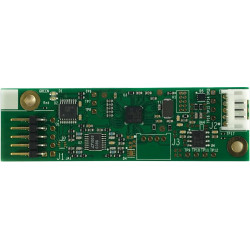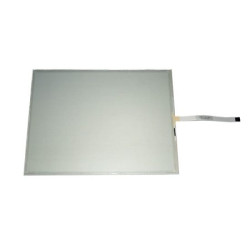-
BackX
-
Components
-
-
Category
-
Semiconductors
- Diodes
- Thyristors
-
Electro-insulated Modules
- Electro-insulated Modules | VISHAY (IR)
- Electro-insulated Modules | INFINEON (EUPEC)
- Electro-insulated Modules | Semikron
- Electro-insulated Modules | POWEREX
- Electro-insulated Modules | IXYS
- Electro-insulated Modules | POSEICO
- Electro-insulated Modules | ABB
- Electro-insulated Modules | TECHSEM
- Go to the subcategory
- Bridge Rectifiers
-
Transistors
- Transistors | GeneSiC
- SiC MOSFET Modules | Mitsubishi
- SiC MOSFET Modules | STARPOWER
- Module SiC MOSFET ABB’s
- IGBT Modules | MITSUBISHI
- Transistor Modules | MITSUBISHI
- MOSFET Modules | MITSUBISHI
- Transistor Modules | ABB
- IGBT Modules | POWEREX
- IGBT Modules | INFINEON (EUPEC)
- Silicon Carbide (SiC) semiconductor elements
- Go to the subcategory
- Gate Drivers
- Power Blocks
- Go to the subcategory
- Electrical Transducers
-
Passive components (capacitors, resistors, fuses, filters)
- Resistors
-
Fuses
- Miniature Fuses for electronic circuits - ABC & AGC Series
- Tubular Fast-acting Fuses
- Time-delay Fuse Links with GL/GG & AM characteristics
- Ultrafast Fuse Links
- Fast-acting Fuses (British & American standard)
- Fast-acting Fuses (European standard)
- Traction Fuses
- High-voltage Fuse Links
- Go to the subcategory
- Capacitors
- EMI Filters
- Supercapacitors
- Power surge protection
- Go to the subcategory
-
Relays and Contactors
- Relays and Contactors - Theory
- 3-Phase AC Semiconductor Relays
- DC Semiconductor Relays
- Controllers, Control Systems and Accessories
- Soft Starters and Reversible Relays
- Electromechanical Relays
- Contactors
- Rotary Switches
-
Single-Phase AC Semiconductor Relays
- AC ONE PHASE RELAYS 1 series| D2425 | D2450
- One phase semiconductor AC relays CWA and CWD series
- One phase semiconductor AC relays CMRA and CMRD series
- One phase semiconductor AC relays - PS series
- Double and quadruple semiconductor AC relays - D24 D, TD24 Q, H12D48 D series
- One phase semiconductor relays - gn series
- Ckr series single phase solid state relays
- One phase AC semiconductor relays for DIN bus - ERDA I ERAA series
- 150A AC single phase relays
- Rail Mountable Solid State Relays With Integrated Heat Sink - ENDA, ERDA1 / ERAA1 series
- Go to the subcategory
- Single-Phase AC Semiconductor Relays for PCBs
- Interface Relays
- Go to the subcategory
- Cores and Other Inductive Components
- Heatsinks, Varistors, Thermal Protection
- Fans
- Air Conditioning, Accessories for Electrical Cabinets, Coolers
-
Batteries, Chargers, Buffer Power Supplies and Inverters
- Batteries, Chargers - Theoretical Description
- Modular Li-ion Battery Building Blocks, Custom Batteries, BMS
- Batteries
- Battery Chargers and Accessories
- Uninterruptible Power Supply and Buffer Power Supplies
- Inverters and Photovoltaic Equipments
- Energy storage
- Fuel cells
- Lithium-ion batteries
- Go to the subcategory
-
Automatics
- Futaba Drone Parts
- Limit Switches, Microswitches
- Sensors, Transducers
-
Infrared Thermometers (Pyrometers)
- IR-TE Series - Water-proof Palm-sized Radiation Thermometer
- IR-TA Series - Handheld Type Radiation Thermometer
- IR-H Series - Handheld Type Radiation Thermometer
- IR-BA Series - High-speed Compact Radiation Thermometer
- IR-FA Series - Fiber Optic Radiation Thermometer
- IR-BZ Series - Compact Infrared Thermometers
- Go to the subcategory
- Counters, Time Relays, Panel Meters
- Industrial Protection Devices
- Light and Sound Signalling
- Thermographic Camera
- LED Displays
- Control Equipments
-
Recorders
- Hybrid Recorders - AL3000 Series | CHINO
- Graphic Recorder - KR2000 Series | CHINO
- Ubiquitous Recorders - KR5000 Series | CHINO
- Palm-sized Temperature/Humidity Meters - HN-CH Series | CHINO
- Consumables for Recorders
- 71VR1 - Compact Paperless Recorder | M-SYSTEM
- Graphic Recorder - KR3000 Series | CHINO
- PC Recorders - R1M Series | M-SYSTEM
- PC Recorders - R2M Series | M-SYSTEM
- PC Recorders - RZMS Series | M-SYSTEM
- PC Recorders - RZUS Series | M-SYSTEM
- Go to the subcategory
- Go to the subcategory
-
Cables, Litz wires, Conduits, Flexible connections
- Wires
- Litz wires
- Cables for extreme applications
- Sleevings
-
Braids
- Flat Braids
- Round Braids
- Very Flexible Flat Braids
- Very Flexible Round Braids
- Cylindrical Cooper Braids
- Cylindrical Cooper Braids and Sleevings
- Flexible Earthing Connections
- Galvanized and Stainless Steel Cylindrical Braids
- PCV Insulated Copper Braids (temp. up to 85C)
- Flat Aluminium Braids
- Junction Set - Braids and Tubes
- Go to the subcategory
- Traction Equipment
- Cable Terminals
- Flexible Insulated Busbars
- Flexible Multilayer Busbars
- Cable Duct Systems
- Hoses
- Go to the subcategory
- View all categories
-
Semiconductors
-
-
- Suppliers
-
Applications
- CNC Machine Tools
- DC and AC Drives (Inverters)
- Energetics
- Energy bank
- Equipment and Components for Hazardous Areas [Ex]
- Equipment for Distribution, Control and Telecommunications Cabinets
- HVAC Automation
- Induction Heating
- Industrial Automation
- Industrial Protective Devices
- Machines for Drying and Wood Processing
- Machines for Thermoforming Plastics
- Mining, Metallurgy and Foundry
- Motors and Transformers
- Power Supplies (UPS) and Rectifier Systems
- Printing
- Temperature Measurement and Regulation
- Test and Laboratory Measurements
- Tram and Railway Traction
- Welding Machines
-
Assembly
-
-
Inductors
-
-
Induction devices
-
-
https://www.dacpol.eu/pl/naprawy-i-modernizacje
-
-
Service
-
- Contact
- Zobacz wszystkie kategorie
How to choose the right resistive touch panel for industrial applications

In the industry, automation and digitization of processes are increasingly important, often involving the use of advanced user interfaces like touch panels. In many industrial applications, choosing the right touch panel is a challenge, especially when adapting to specific working conditions such as high humidity, dust, or the need for glove operation. Resistive touch panels are a popular choice in industrial applications due to their durability and reliability. In the article below, we will discuss what to consider when selecting the appropriate resistive touch panel for industrial applications.
Advantages of Resistive Touch Panels
Resistive touch panels are known for their high sensitivity and resistance to harsh environmental conditions. Unlike capacitive touch screens, which require conductivity (e.g., finger contact), a resistive screen operates based on pressure. This means that a resistive touch screen can be operated not only by finger but also by stylus, tool, or even while wearing gloves, which is extremely useful in industrial environments.
The main advantages of resistive screens are:
- High pressure sensitivity – The resistive touch screen can precisely detect pressure, even when using objects other than a finger.
- Resistance to contamination – Resistive touch panels are less susceptible to the effects of dust, moisture, or dirt, making them ideal for environments with high levels of contamination.
- Low cost – Compared to other touch technologies, resistive touch screens can be a more economical choice, which is important for larger investments in industrial infrastructure.
What Features Should a Resistive Touch Panel Have for Industrial Applications?
When choosing a resistive touch screen, it's essential to consider several key parameters that will impact its longevity and reliability in demanding industrial environments. Here’s what to keep in mind:
- Resistance to Harsh Environmental Conditions
In industry, screens are exposed to a range of factors such as dust, moisture, temperature fluctuations, and chemicals. Resistive touch panels, thanks to their layer-based construction, are often more resistant to these factors than other types of screens. It is advisable to choose models with additional protection against dust and water, suitable for operation even in extreme conditions.
- Sensitivity and Accuracy
For industrial applications, it is important that the resistive screen is not only durable but also precise. In areas requiring millimeter accuracy, such as laboratories or production lines, a precise resistive panel can ensure optimal performance without risk of error. Most resistive touch panels allow sensitivity adjustment, which is advantageous in various operating conditions.
- Compatibility with Gloves and Tools
In heavy industry, where workers often use protective gloves, traditional capacitive touch panels may not be convenient. A resistive touch panel allows for easy operation in gloves, which enhances both usability and safety. This way, operators can effectively use the interface without removing protective gloves.
- Scratch and Mechanical Damage Resistance
Due to their construction, resistive touch panels are resistant to accidental mechanical damage, which is crucial in environments where devices are exposed to contact with hard objects or tools. It's recommended to select a resistive screen coated with a scratch-resistant layer to ensure a longer lifespan and aesthetic appearance.
- Ease of Maintenance and Low Maintenance Costs
Resistive touch panels are relatively easy to maintain, which reduces operational costs. In industrial conditions, where regular disinfection or cleaning of screens is necessary, the resistive touch screen allows easy cleaning without risk of damage.
Types of Industrial Applications Where Resistive Touch Panels Excel
Resistive touch panels are widely used in many industrial sectors. Here are examples of applications where a resistive touch screen may be the best choice:
- Industrial Automation
In production plants where touch panels are part of machinery and equipment, resistive screens allow precise operation even in harsh conditions. For operators working in gloves, a resistive touch panel provides a convenient way to manage production processes.
- Chemical and Pharmaceutical Industries
In these industries, it is crucial that the resistive touch screen is resistant to chemical exposure and easy to disinfect. Since the resistive screen operates independently of moisture or chemical presence, it is a safe choice for applications that require working in a chemical environment.
- Transport and Logistics
In the logistics industry, resistive touch panels are used in terminals for supply chain management and resource monitoring. Their resistance to contamination and compatibility with gloves make resistive touch screens a popular choice in this sector.
- Energy and Heavy Industry
In power plants and industrial facilities, where touch panels are exposed to high temperatures, dust, or vibrations, the resistive screen performs well due to its durability. In this environment, a resistive touch screen provides a stable operation with minimal maintenance requirements.
Available Types of Resistive Touch Panels
Various types of resistive touch panels are available on the market, differing in parameters, construction, and protection level. Key types include:
- 4-wire resistive touch panels – The simplest type of resistive screens, primarily used in applications that do not require high precision. These are economical solutions suitable for less demanding environments.
- 5-wire resistive touch panels – Provide greater precision and longer lifespan. This resistive touch screen technology is used where high durability and resistance are required.
- 8-wire resistive touch panels – These advanced screens are designed for applications requiring the highest accuracy and resistance. Resistive touch panels in this technology are characterized by increased durability against mechanical damage.
Conclusion
Resistive touch panels are an excellent choice for industry due to their resistance to harsh conditions and suitability for various environments. When selecting the appropriate resistive touch panel, it is important to consider the specific application requirements, such as contamination resistance, glove compatibility, and high precision needs.
Related products
Related posts
 Now available – DC/DC converters from PREMIUM
Now available – DC/DC converters from PREMIUM
 New release in DACPOL lighting for lathes – Kira covers
New release in DACPOL lighting for lathes – Kira covers






Leave a comment